Early Career Scientist Spotlight
Dr. Olivia Wilkins (she/her/hers)
Astrochemist
Astrochemistry Laboratory (691)
What inspired you to pursue a career in astrochemistry?
My career in astrochemistry is thanks to a fascination with giant radio telescopes. When I was seven, my family was driving through the mountains in West Virginia when I saw what looked like a giant satellite dish looming over the trees. I thought it was so neat that I sketched it in my notebook, imprinting the awe-inspiring scene in my mind. Many years later, my family returned to the area to check out what the giant dish was, and I learned that what I had seen was in fact the Green Bank Telescope, the largest fully-steerable single-dish radio telescope (and the largest movable object on land) in the world. I learned about radio astronomy, and I immediately had this dream of someday working at the observatory.
At the same time, I was about to start college and decided on being a chemistry major. I figured that, as someone who was interested in just about every discipline of science, a background in chemistry would allow me to have just about any science-related career I ended up wanting. During my second year, I was still thinking about the Green Bank Telescope and decided to apply to their summer research program. I had never taken an astronomy course before, but I leveraged my math major and was offered a position as a summer student. While I was there, a scientist from the National Radio Astronomy Observatory (NRAO) headquarters gave a talk about astrochemistry. Getting to use big telescopes and my chemistry degree? Once I heard “astrochemistry”, I knew it was the career path for me.
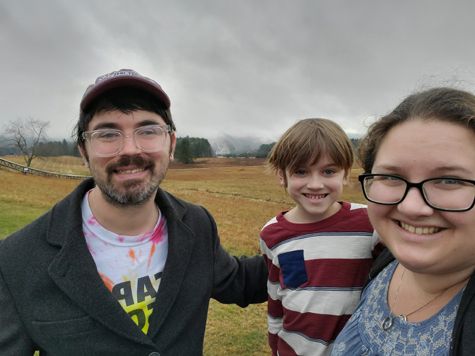
Credit: Olivia Harper Wilkins
What was your first big research achievement?
My first big research achievement happened in my first year of undergrad. My general chemistry professor asked me to do research in her lab because she saw illustrations of cucumber beetles I had done in my lab book and noted I had excellent attention to detail. I had enjoyed art for a long time, but art classes in high school were weighted such that even a high grade could lower your GPA. That experience in high school made me think art wasn’t valued and that I couldn’t be an artist and a scientist. However, my chemistry professor showed me that art was, in fact, valuable, even in science. This research achievement might not seem that big (and it isn’t really about research specifically), but it has had a profound impact on my identity as a scientist. Now, I incorporate art into my research whenever I can, for example by illustrating my own graphical abstracts for papers.
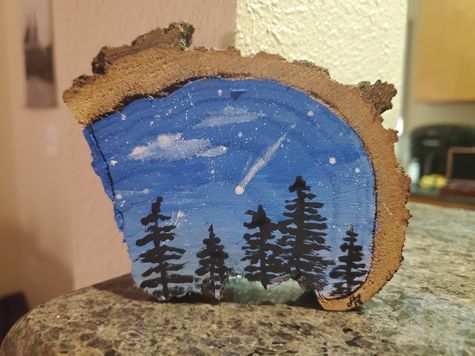
Credit: Olivia Harper Wilkins
Tell us about the research projects you are currently working on.
At Goddard, most of my research is done through SubLIME, or the Sublimation of Laboratory Ices Millimeter/submillimeter Experiment. In the SubLIME lab, we make cosmic ice analogues under ultra-high vacuum and temperatures of 10 Kelvin (about -440 °F!) to represent ices in the interstellar medium or on the surfaces of comets. These ices aren’t just water ice; they are any volatile chemical, such as methanol, in a solid form at low temperature. We process the ice using an ultraviolet (UV) lamp to simulate radiation from an infant star or the Sun. This processing breaks apart the molecules in our ice sample, and the resulting fragments recombine to form new molecules. We then warm up our sample to room temperature, during which time the solid material sublimates, or becomes a gas. Once we have the gas-phase products of our reaction, we observe them at the same millimeter and submillimeter wavelengths of light used to observe molecules in space with radio telescopes.
Since astronomers can’t visit a lot of the extraterrestrial laboratories they’re interested in, they sometimes use molecules as probes. The work I’ve been doing with SubLIME recently has been focused on testing some of the hypotheses about what these chemical probes can tell us. For example, the ratios of certain structural isomers—which refers to two molecules that have the same atoms in the same quantity but in different arrangements—are thought to be directly tied to temperature. By processing cosmic ice analogues at different temperatures in the lab, we can confirm whether such ratios are in fact tied to temperature.
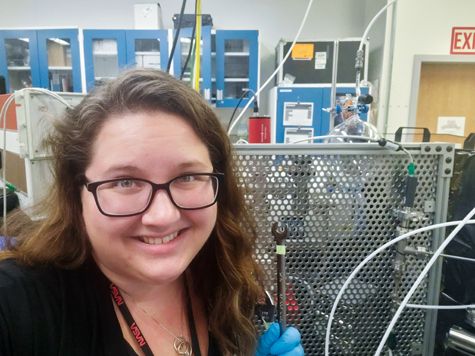
Credit: Olivia Harper Wilkins
What aspect(s) of your work are you most passionate about?
My passion for radio astronomy is what brought me to astrochemistry, and radio telescopes remain the part of astrochemistry I am most passionate about. In addition to doing laboratory work, I have a background in radio telescope observations of molecules in space. Any opportunity to visit a radio telescope, or even just talk about one, is definitely the most exciting aspect of my work.
I’m also passionate about communicating about science, whether through art, writing, or giving talks to non-technical audiences. I especially enjoy giving public talks at observatories and libraries.
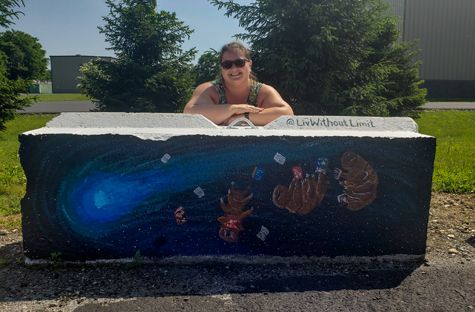
Credit: Molly Goehring
What early career advice do you have for those looking to do what you do?
Apply to opportunities that interest you, even if you don’t think you’re qualified! Scientists collect a wide range of skills that they can apply to topics outside their immediate area of expertise. When I applied to work with the Green Bank Telescope as a summer student during undergrad, I didn’t have any astronomy background. In my application, however, I focused on my experience analyzing data in chemistry labs and applying math and logic to solve problems. Similarly, when I applied for my current position at Goddard, I hadn’t worked in a lab for more than five years. But I had experience working with the types of data used in the SubLIME lab, and I also brought an observer perspective, which is great since we endeavor to answer questions about patterns observed by observational astrochemists. I didn’t think I had a chance at either of these opportunities (and almost didn’t even apply to do research at NASA). The only guarantee that you won’t get a research opportunity or an award is not applying at all.

Credit: Olivia Harper Wilkins
If you were to expand your current research focus, what new topic(s) would you explore?
Something I hope to do in the future is use experiments to explore some of the methanol chemistry I’ve observed in a nebula called Orion KL using the Atacama Large Millimeter/submillimeter Array (ALMA). Methanol in Orion KL has been studied a lot over the last few decades, and high spatial resolution instruments, like ALMA, provide a different view by allowing us to investigate how chemical distribution changes with things like temperature and density. Specifically, Orion KL (along with other high-mass star-forming regions) has some weird patterns between the presence of molecules with deuterium (heavy hydrogen) versus normal hydrogen. Some explanations for these have been explored indirectly in the lab, but I would love to use the power of rotational spectroscopy to study methanol deuteration with SubLIME. There are many other exciting science questions, however, that the SubLIME lab is seeking to answer first!
What do you like to do in your free time?
One of my favorite things to do is to travel with my husband and our six-year-old son. We love a range of travel activities, from venturing to National Parks or spending a weekend in the mountains or at the beach, to going to Europe and riding trains. I also enjoy playing Minecraft with my son. He is so creative, and I am always amazed by what he comes up with. On my own, I love to create art, whether in the form of painting, drawing, woodburning, or embroidery. I also knit, typically in the evenings while watching shows with my husband and our cat Meatball.
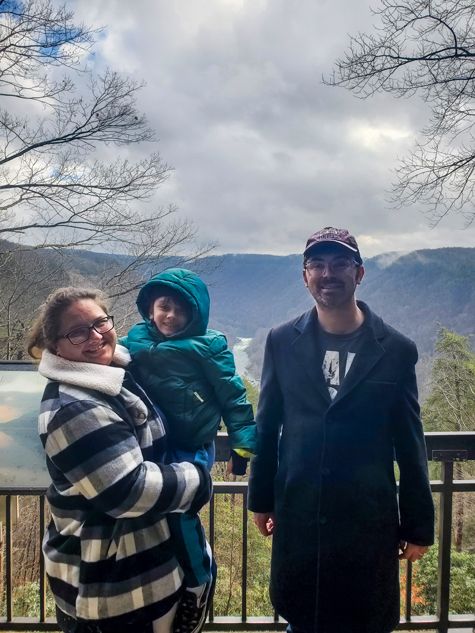
Credit: Friendly stranger at the visitor center
Biography
Home Town:
New Oxford, PA
Undergraduate Degree:
B.S. Chemistry and Mathematics, Dickinson College, Carlisle PA
Post-graduate Degrees:
Ph.D. Chemistry, California Institute of Technology, Pasadena CA

Link to Dr. Wilkins's GSFC Bio
